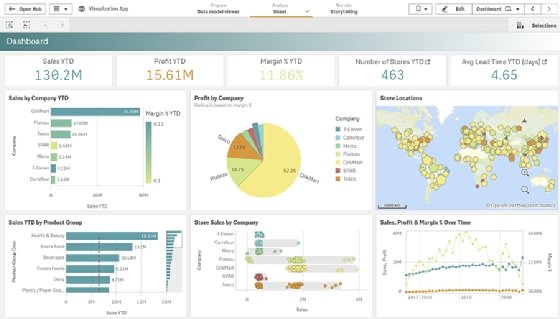Executive Dashboard
 Figure XI An Example of Executive Dashboard
Figure XI An Example of Executive DashboardManagers often track both nonfinancial and financial data by means of an executive dashboard. |
An executive dashboard, sometimes called a business performance dashboard, is a software program that presents key business information in graphical, easy-to-interpret form and alerts managers to any deviations or unusual patterns in the data.
Executive dashboards pull data from a variety of organizational systems and databases; gauge the data against key performance metrics; and pull out the right nuggets of information to deliver to managers’ laptops or PCs for analysis and action.
For example, a Emergency Medical AssociatesOpens in new window, a physician-owned medical group that manages emergency rooms for hospitals in New York and New Jersey, dashboards enable managers to quickly see when performance thresholds related to patient wait times or other metrics aren’t being met at various hospitals.
With the executive dashboard, managers can see at a glance key control indicators such as sales in relation to targets, fill rates on orders, number of products on back-order, production status, or percentage of customer service calls resolved, and then drill down for additional details.
Dashboard systems coordinate, organize, and display the metrics that managers consider most important to monitor on a regular basis, with software automatically updating the figures.
Managers at Erickson Retirement CommunitiesOpens in new window use a dashboard to monitor and control costs in areas such as salaries and resident meals.
At Verizon CommunicationsOpens in new window, a dashboard system keeps track of more than 300 different measures of business performance in three broad categories:
- market pulse (including daily sales numbers and market share);
- customer service (for example, call center wait times and problems resolved on the first call); and
- cost drivers (such as number of repair trucks in the field).
Managers in the various units choose which metrics their dashboard will display based on what relates most to their unit.
Also in this series include:
- Richard L. Daft and Norman B. Macintosh, “The Nature and Use of Formal Control Systems for Management Control and Strategy Implementation,” Journal of Management 10 (1984), 43 – 66

